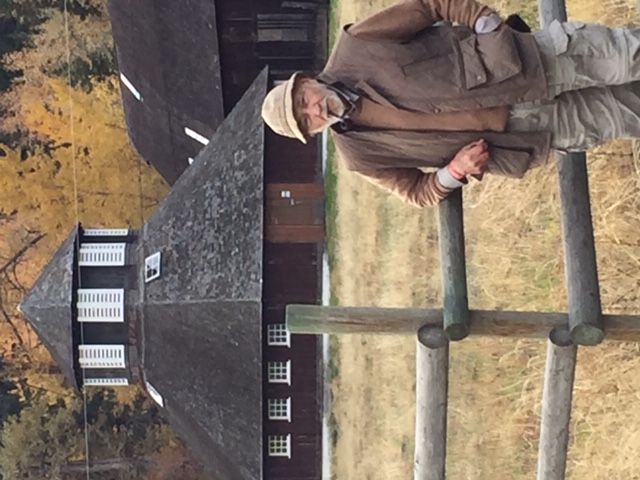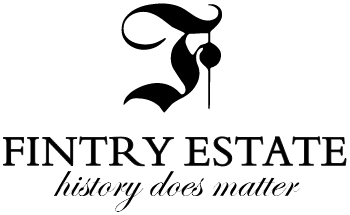Happy New Year to all,
2021 has been a challenging year for us all, not only with a pandemic that won’t go away, but the fires, floods, extreme heat and now extreme cold; Mother Nature seems to be very angry with us. Moving forward, we all must do our part to make this next year a better one…… at least for the things that we can control.
We were saddened to hear of the passing of one of our long-time Board members, Paul Koroscil. Paul has been a strong supporter of the Friends of Fintry since around 2000. He was a great historian, and often contributed essays on many aspects of the Dun-Waters story to the Octagon. He was a wealth of knowledge on Fintry and beyond and will be sorely missed. Last year the Friends of Fintry nominated him and he received the British Columbia Historical Federation’s Award of Merit for his outstanding contributions to the published history of British Columbia and for his continued service to the Fintry Provincial Park. Our condolences go out to his wife Maureen and their family at this difficult time.

HOPE seems to be the key word these days. The Friends of Fintry are looking ahead, hoping that there will be some sort of normalcy in 2022. In that regard we are once again hoping to be able to hire students for our summer tours and programming; hoping that our weather patterns sort themselves out so we have a good Okanagan summer and hoping to welcome many visitors to the Manor House and barns.
Show-casing country houses is not a new phenomenon, as our Curator Dan Bruce has discovered through some research:
“Tourism goes back many centuries, as we know from the notes left by Greek and Roman visitors to the monuments and sites of Egypt. Curiosity is a feature of human nature, and closer to our own time, the tourist has become an accepted part of our culture.
Those visiting the Fintry Estate are indeed following a long tradition. Country house sightseeing was an established and popular activity back in the seventeenth century, involving both the houses themselves, the furnishings, and the landscaped gardens surrounding. In 1675, John Ogilby produced a road atlas, “Britannia”, that gave tourist information on most of the mansion homes and estates that, under certain conditions, were open to the public. It was usual that access was permitted at times when the owner was not in residence. This happened frequently as the owners were usually in possession of several houses, and if they were politically active, they would have to spend considerable time in London, with the country ‘ seats ‘ left in the hands of managers.
There was a desire on the part of the owners to show wealth, influence and culture, and a desire on the part of the visitors to see, compare and at times critique the ‘taste’ of the owner. Lord Cobham created a spectacular estate in the first years of the eighteenth century at Stowe, Buckinghamshire, where George Bickham produced several editions of a guidebook. Copies of the book were available for sale at the gate, and the local merchants were delighted with the effect the estate had on the economy.
“Besides, there is another advantage in wealth laid out in this elegant manner . . . the money spent in the neighborhood, by the company daily crowding hither, to satisfy their curiosity. There is a kind of continual fair… several of the inhabitants of Buckingham say, that this is one of the best trades they have: their inns, their shops, their farms and shambles, all find their account in it.” (Shambles = slaughterhouse, abattoir, meat market).
Lord Cobham went so far as to open a ‘visitor centre’ in 1717, that provided food, lodging and transport as required by visitors, probably the first ever of something now common. One of the greatest English poets of the eighteenth century, Alexander Pope opened his London garden to the public, circa 1735, and it was at this time that Augusta, the Dowager Princess of Wales began the development of what was to become the Royal Botanic Gardens, Kew. In 1772, George III ordered that every Thursday, the Royal Gardens at Kew are to be opened for the reception of such persons as choose to walk in them, and none are to be refused admission who make a decent appearance.
An interest in botany and horticulture linked all of these efforts together, and created many instances where social barriers were overcome, sometimes with remarkable results.
There is no evidence that James Dun-Waters had an intense interest in gardening, but we do know that the surrounding five or so acres at the Manor House were maintained as an informal style “jardin anglais” thus keeping to the long-established tradition. Some of the original plants have survived and can still be found around the Fintry Manor.”
As we move forward looking forward to better days, the Friends of Fintry wishes everyone a happy and healthy New Year.
Stay safe,
Kathy Drew,
Friends of Fintry Provincial Park
